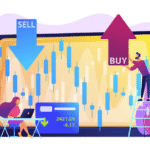How to Read Forex Charts Like a Pro
Forex charts are the foundation of every trader’s decision-making process. These charts visually display currency price movements over time, helping traders identify market trends and make informed trading choices. To read Forex Charts like a pro, start by understanding their basic structure. The vertical axis represents the price of a currency pair, while the horizontal axis shows the time frame. Traders can choose different chart types—line, bar, or candlestick—depending on their trading style. Among these, candlestick charts are the most popular because they provide detailed information on price movements, including open, close, high, and low values. When you analyze Forex Charts, you gain insights into how prices react to various economic events and trader behavior, which can significantly improve your market predictions. Mastering this foundation allows you to build strategies that align with market conditions, helping you minimize risks and maximize potential profits.

Identifying Market Trends and Patterns
Once you understand how to read Forex Charts, the next step is identifying patterns and trends that signal possible trading opportunities. A trend represents the general direction of price movement—upward, downward, or sideways. By recognizing these movements early, traders can enter or exit positions strategically. Common patterns like head and shoulders, triangles, and double tops or bottoms often signal potential reversals or continuations in the market. Using trendlines, moving averages, and support and resistance levels helps confirm these signals. Active traders use these tools to anticipate future movements and time their trades effectively. The key is consistency and practice—continuously reading Forex Charts and observing how patterns evolve in different time frames. The more familiar you become with these visual cues, the more confident and accurate your trading decisions will be.
Applying Technical Indicators Effectively
To read Forex Charts like a pro, learning to use technical indicators is essential. Indicators such as the Relative Strength Index (RSI), Moving Average Convergence Divergence (MACD), and Bollinger Bands help traders analyze momentum, volatility, and potential reversals. For instance, RSI reveals whether a currency pair is overbought or oversold, while MACD identifies trend strength and direction. Combining multiple indicators provides a broader perspective and helps validate trade entries or exits. However, professional traders avoid overcrowding their charts with too many tools. Instead, they select a few reliable indicators that complement their trading strategy. Transitioning from beginner to advanced chart reading involves focusing on clarity, accuracy, and data-backed decision-making. By integrating indicators effectively, you transform raw chart data into actionable insights that can drive your trading success.
Mastering the Art of Forex Chart Reading
Learning to read Forex Charts like a pro takes time, patience, and continuous practice. Start with the basics, identify patterns, and gradually incorporate technical indicators into your analysis. Every chart tells a story—your goal is to interpret it correctly to make smarter trading decisions. Remember, the more you engage with Forex Charts, the sharper your instincts and timing will become. With discipline and proper analysis, you can transform chart reading from a confusing task into your strongest trading skill.

What is Lorem Ipsum?
Lorem Ipsum is simply dummy text of the printing and typesetting industry. Lorem Ipsum has been the industry’s standard dummy text ever since the 1500s,
How to Read Forex Charts Like a Pro
How to Read Forex Charts Like a Pro Forex charts are the foundation of every trader’s decision-making process. These charts visually display currency price movements

CFD Trading Explained: What It Is and How It Works
CFD Trading Explained: What It Is and How It Works Contracts for Difference, more commonly known as CFD Trading, represent a modern way of engaging
SmarTrade Featured in Manila Standard for Bringing Back Exclusive Trading Seminar to Manila
SmarTrade Featured in Manila Standard for Bringing Back Exclusive Trading Seminar to Manila SmarTrade has once again proven its leadership in financial education as it

Forex Broker: How to Choose the Right One
Choose the right Forex broker for your trading journey with essential tips and insights to enhance your trading experience and success.

Emotional Trading: How to Stay Calm and Collected
Discover the impact of emotional trading and learn strategies to maintain calmness and clarity in your trading decisions.
